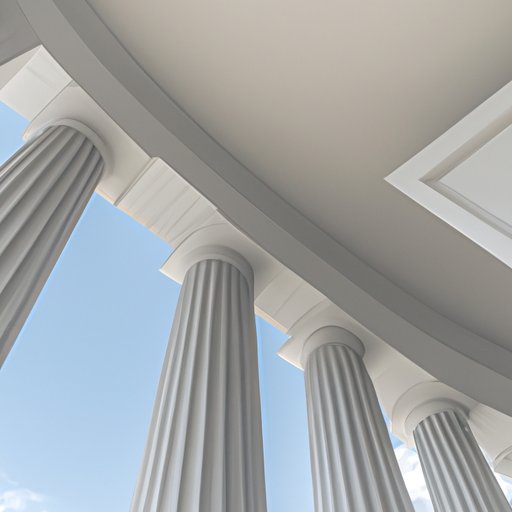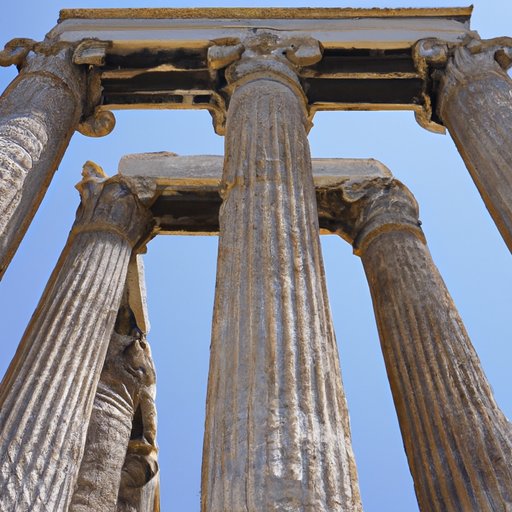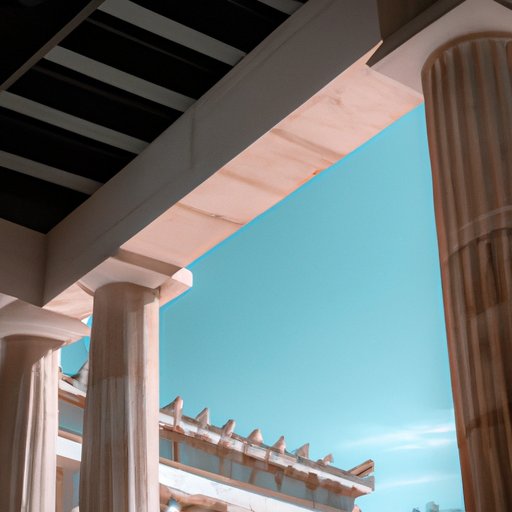Introduction
Balance and order were two of the most important concepts in ancient Greek architecture. The Greeks sought a harmonious relationship between people, nature, and the gods through their design principles. Balance and order were essential aspects of this philosophy. This article will explore how balance and order were used to govern Greek architecture and create beautiful and functional structures.
Definition of Balance and Order
Balance is defined as “the state of having an equal distribution of weight, amount, or force” (Merriam-Webster Dictionary). This concept was applied to architecture by creating symmetrical structures with equal weight on either side. Order is defined as “a state in which everything is in its proper place” (Merriam-Webster Dictionary). This principle was used to create structures that were aesthetically pleasing and organized. Together, these two ideas formed the basis of Greek architecture.

Overview of Greek Aesthetic Principles
The Greeks believed that a structure should be beautiful, functional, and in line with their religious beliefs. They developed aesthetic principles to guide their design process. These included proportion, symmetry, harmony, geometry, and mathematics. Proportion refers to the size and shape of the building and its elements. Symmetry is the use of identical parts on each side of the structure. Harmony is the combination of different elements to create a unified whole. Geometry is the use of circles, squares, and triangles to create patterns. Lastly, mathematics is the use of mathematical equations to calculate proportions and angles.

Examining the Role of Balance and Order in Ancient Greek Architecture
The Greeks used balance and order to create beautiful and functional structures. They used proportion, symmetry, and harmony to create aesthetically pleasing designs. For example, the Parthenon in Athens is a classic example of symmetry. Its columns are evenly spaced, and the frieze is perfectly balanced. The Greeks also used geometry and mathematics to achieve balance and order. The Parthenon was designed using mathematical equations to ensure that the proportions were correct.

Investigating the Relationship Between Mathematics and Greek Architecture
Mathematics played an important role in Greek architecture. The Greeks used geometry to create patterns and designs for their structures. For example, the Parthenon was designed using a combination of circles, squares, and triangles. The Greeks also used mathematics to achieve balance and order. They used mathematical equations to calculate proportions and angles to ensure that the structure was symmetrical and balanced.
Exploring the Impact of Balance and Order on the Magnificence of Greek Temples
The use of balance and order in Greek architecture created structures that were both aesthetically pleasing and functional. The use of mathematics allowed them to achieve perfect symmetry and harmony. This allowed the Greeks to create magnificent temples that stood the test of time. For example, the Parthenon is considered one of the most beautiful buildings ever constructed. Its mathematical precision and balance make it a timeless masterpiece.
Conclusion
Balance and order were essential aspects of Greek architecture. The Greeks used proportion, symmetry, harmony, geometry, and mathematics to create beautiful and functional structures. They used mathematics to achieve perfect symmetry and harmony, which resulted in magnificent temples that still stand today. Balance and order continue to be important principles in modern architecture and design, reflecting the lasting legacy of the Greeks.
(Note: Is this article not meeting your expectations? Do you have knowledge or insights to share? Unlock new opportunities and expand your reach by joining our authors team. Click Registration to join us and share your expertise with our readers.)
